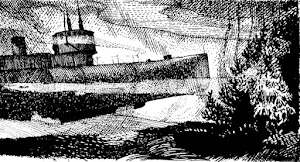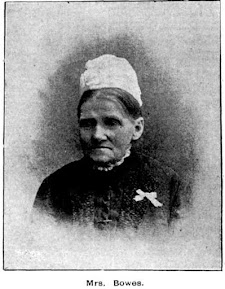A memorial in Sydney to those lost in a horrific submarine disaster.
For today's blog I wish to
highlight a man, I believe, who used up all his nine lives in one go, became a
successful businessman and the reason why a large memorial is situated on a busy road in the
nearby suburb of Carlingford.
CHARLES ALBERT HARRY
FREESTONE
Charles was born on 15th
March 1896, the youngest child of four of Charles Freestone, a travelling
salesman and his wife Harriet. Harriet died soon after his birth and Charles
brought up his four children in Chelmsford Essex England.
He joined the Navy as soon
as he was able, and his first service date was the 23rd of January 1912 on board
the ‘Impregnable’ as a "boy".
Earlier at the beginning of
the century, the First Sea Lord, Admiral Fisher, foresaw the need to develop
submarines as an offensive weapon which was criticised as being the weapon of
weaker nations and seen as underhand warfare weapon. However, they needed to be
developed as other nations were doing so. By 1913 Fisher requested that
the Director of Naval Construction to construct a fleet of submarines to
counter the German strength.
The new design had a range
of 3,000 miles and was capable of 24 knots on the surface, a major increase on
earlier models that were smaller and slower.
At the outbreak of WW1,
submarines were a major worry as there was no method to counter them when
submerged, even if that was limited. The German U-boats, however, were very
successful in the early months of the war.
As improvements proceeded
slowly, the K Class submarine was ordered in May 1915 with 14 in the initial
order and with guns, they became submersible destroyers. By August 1916, 12 had
almost been completed and another 7 were ordered.
In January 1917 the K 13
commenced sea trials in Glasgow, Scotland. There was a crew of 53 on board and
with various other members brought the total to 80. Once in the test area, the
K13 completed her surface trials where she recorded a speed of 23kn making her
the fastest submarine in the world. Everyone went off to lunch in a buoyant
mood.
Charles, a leading
telephonist at the time, was part of the crew on board.
She then began her next dive
smoothly at 3.15pm but refused to level out at 6 metres and continued her
downward plunge. It had been noted in a final inspection after lunch that one
of the indicators was flashing but this was thought to be caused by faulty
wiring. Unfortunately, this indicator showed that some boiler room ventilators
were not fully shut off. It wasn’t long before the boiler room was reported as
flooded and so to save the ship the watertight door to the stern section was
closed off. This meant certain death to those trapped.
The descent could not be
stopped and K13 settled in 16 metres of water. A fire broke out in the main
switchboard consuming valuable oxygen. Thirty-one men were already dead, and
survival of the remainder was problematic. Surface observers became concerned
when the K13 failed to resurface and oil slicks appeared. After many attempts
to rescue the sub, it was not until dawn that divers descended. During the
intricate rescue attempts, a further life was lost when the man hit his head
whilst being projected hurriedly upwards.
The salvage crew
communicated with the survivors via morse code and ingeniously attached a hose
through which air, some food and drinks were passed. Eventually a hole was cut
through the hull and the survivors were rescued.
They had been entombed 57
hours and 48 men survived. The number 13 was never again given to a Royal Navy
submarine.
Charles survived this ordeal
and continued with his naval career, transferring to the Royal Australian Navy
in 1921. He came to Australia in the first British submarine to visit these
shores, serving another five years before his discharge at the age of 30.
Charles settled in
Marrickville in the late 1920's, married Margaret Haddock, and established a
fibrous plaster ceiling business. His first works were in Pennant Street,
Parramatta. By the mid 1940's his company, C.A. Freestone Pty. Ltd. had an
office and main works in Victoria Road, Parramatta and a secondary works in
River Road, Camellia. After WW2, Charles moved from Marrickville to Blacktown
where he lived until his retirement when he moved to Parramatta.
In the area he was known as
a prominent manufacturer, employer and investor. The district reminded him of
his home in Chelmsford Essex as both were located on a river with large
industrial areas with pleasant rural areas surrounding them. He never forgot
his submarine shipmates, especially those that perished on the K13. In his
will, he set aside part of his Carlingford subdivision in 1956 to be named K13
Memorial Park.
Charles died on 27th May
1958 after a battle with pneumonia never seeing his memorial commenced.
His widow, Margaret, took up
the cause, an architect was employed and keeping in mind Charle's wish for
"some good solid Australian stone as used by pioneers" to embody a
seascape motif with the letters K13 clearly displayed, a plan was submitted to
the Council and finally adopted in March 1961.
Rear Admiral H.A. Showers
CBE RAN (Rtd) conducted the service commemoration the unveiling and dedication
of the K13 Memorial to all Commonwealth submariners on the 10th of September
1961, in the presence of the High Commissioner for the UK, Lieutenant General
Sir William Oliver, KGB and Mrs. M Freestone and others. Since its unveiling an
annual wreath laying ceremony has been conducted at 11am on the 11th of November, Remembrance Day, each year.
The main feature is a big
pool with a 15ft high natural rock weighing some 20 tones with the large
letters K13 rising up and has the inscription "This memorial has been
created in memory of those officers and men of the Commonwealth who gave their
lives in submarines while serving the call of freedom. It is called the K13
memorial in particular memory of those lost in HM Submarine K13”. The Royal Navy donated a number of plaques including
one with the words of Psalm 107 "They that go down to the sea in ships,
that do business in the great waters, these see the work of the Lord, and His
wonders in the deep."
Charles' service at his burial was attended by his wife, his two brothers and many members of the Royal Navy as well as former employees and friends. Margaret joined Charles forever when she passed away in 1976. They now lie in the Anglican area near the Rookwood General Cemetery office.
Charles and Margaret Freestone burial site - author's own collection.
The K13 memorial is located
on Pennant Hills Road close to Carlingford Centre and is well maintained, an
oasis of calm on a busy road.
The war graves and a monument to those who lost their lives in the K13 sinking was erected by the ship’s company and is located near the entrance to Faslane Cemetery at the head of Gare Loch, Strathclyde. There is a further memorial in Elder Park, Govan, opposite the Fairfield shipyard.
War Grave and civilians memorial Faslane Cemetery - Imperial War Museum with thanks
K13 memorial Elder Park Govan - courtesy Mitchell Library Glasgow collection Scotland with thanks.
References I have used today
include Ancestry.com; Cumberland Argus dated June 4, 1958, Monuments Australia,
Angelfire, Virtual War Memorial, Imperial War Museum and The Dictionary of Sydney amongst others.
If you have any further
insights into this blog, such as knowing of a former employee of Charles or a
sailor who knew him, please add to the comments here or at the Group Facebook
Page which can be found by searching there under
rookwoodcemeterydiscoveries
or simply send me a personal
message at
lorainepunch@gmail.com
Until next week!








Comments
Post a Comment